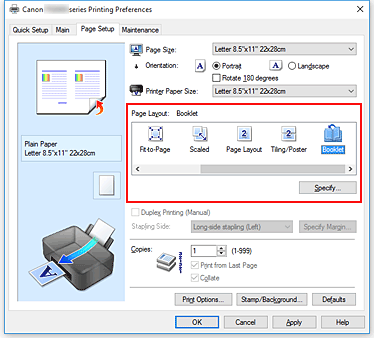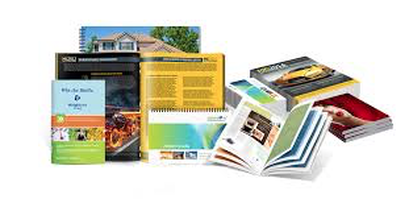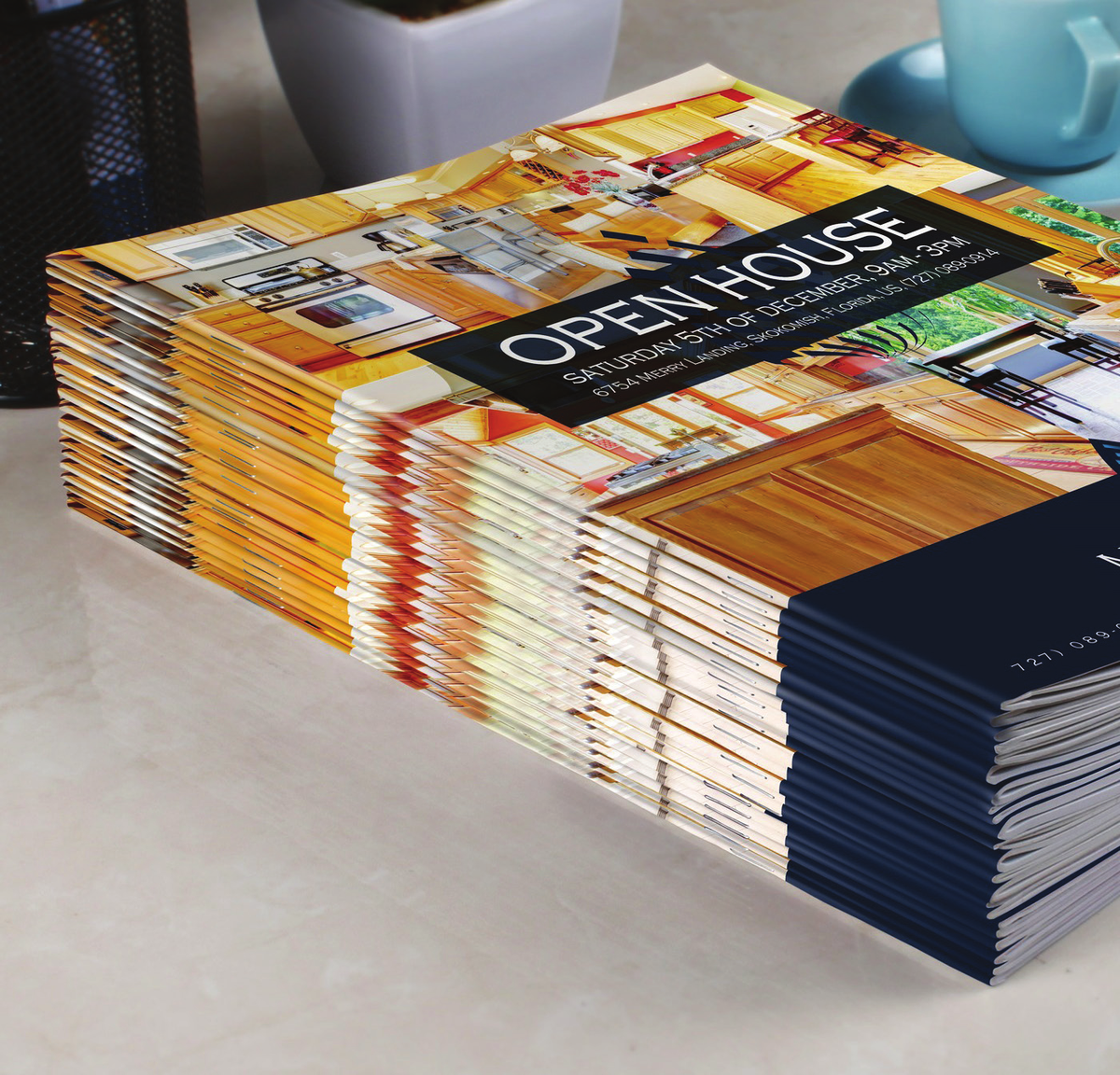Why More Companies Are Turning to Local Booklet Printing Services
Why More Companies Are Turning to Local Booklet Printing Services
Blog Article
The Essential Overview to Comprehending Booklet Printing Options and Techniques
The process of pamphlet printing involves several considerations that can greatly affect the end product. From picking the appropriate style and size to comprehending the subtleties of binding methods, each choice plays a crucial function. Furthermore, aspects such as paper stock and printing methods further affect the effectiveness of the pamphlet. As one navigates these alternatives, it becomes essential to understand exactly how they interconnect and what that indicates for the overall end result.
Recognizing Booklet Sizes and formats
When thinking about booklet printing, recognizing the different formats and sizes readily available is essential for attaining the preferred presentation. Booklets can be created in countless formats, including saddle-stitched, spiral-bound, and perfect-bound, each offering unique benefits. Typical dimensions range from conventional letter (8.5 x 11 inches) to smaller sized options like A5 (5.8 x 8.3 inches), enabling for flexibility based on web content and target audience.Selecting the appropriate size can influence both the design and visitor involvement. Larger dimensions could suit aesthetically driven content, while smaller sized layouts may be much more mobile and straightforward. In addition, the number of pages impacts the selection of binding method, as thicker brochures might call for sturdier bindings. Ultimately, comprehending these facets allows for a much more customized strategy, ensuring that the final product lines up with the designated message and visual, boosting the total effectiveness of the communication.
Choosing the Right Paper Stock

Binding Methods: Considerations and options
When it pertains to binding approaches for booklets, several choices are offered, each with distinctive benefits. Saddle stitch binding offers an economical remedy for thinner pamphlets, while perfect binding techniques offer an even more refined seek thicker magazines. Wire-O binding stands out for its longevity and ease of use, making it optimal for papers that call for adaptability.
Saddle Stitch Binding
Saddle stitch binding uses a cost-efficient and useful solution for constructing brochures, making it a preferred option amongst companies and publishers. This binding method involves folding sheets of paper in fifty percent and stapling them along the fold line, developing a cool and orderly look. Typically ideal for pamphlets with a reduced page matter, saddle stitching is ideal for publications, sales brochures, and training materials. The simplicity of this strategy enables for quick production and is usually preferred for short runs or promotional things. Nonetheless, it is necessary to note that saddle stitch binding might not appropriate for thicker brochures, as the spine might not hold up under raised weight. In general, it continues to be a trusted choice for many printing tasks.
Perfect Binding Methods
Perfect binding is an extensively utilized technique that supplies a professional and sleek finish to magazines and booklets. This technique entails gluing the pages with each other at the spine making use of a strong adhesive, enabling a clean edge and the capacity to hold a larger number of web pages compared to saddle stitching. Perfect binding is specifically suitable for thicker pamphlets, such as catalogs and annual reports, where a durable, flat spine is desired. Additionally, it offers the alternative for a published cover that can be made to boost visual allure. Factors to consider such as page matter, paper weight, and the intended use of the brochure must be taken right into account, as they can influence resilience and general high quality.
Wire-O Binding Alternatives
Wire-O binding, recognized for its durability and flexibility, provides an exceptional alternative for pamphlets that call for very easy web page transforming and a specialist look. This binding approach uses a collection of steel loopholes that hold web pages securely, permitting them to exist level when open. It is particularly suitable for brochures, manuals, and presentations as a result of its durable nature. Wire-O binding is offered in different shades and diameters, accommodating different web page matters and thicknesses. Additionally, it allows the addition of covers and tabs, enhancing the pamphlet's total aesthetic. Considerations for Wire-O binding consist of the selection of cable color, the dimension of the loopholes, and the extent of personalization wanted, every one of which can profoundly influence the end product's look and functionality.
Digital vs. Offset Printing: Which Is Best for You?
When picking a printing technique for pamphlets, recognizing the differences in between digital and offset printing is crucial. Digital printing uses modern innovation to produce high-quality prints quickly and economically, making it perfect for brief runs or projects calling for quick a fantastic read turn-around times. It allows for modification, offering the capacity to print on-demand with marginal waste.In contrast, balance out printing is a conventional approach that masters creating large quantities with regular quality. It includes moving ink from a plate to a rubber blanket, after that to the paper, which results in lively shades and accurate details. Counter printing usually calls for longer setup times and is a lot more cost-efficient for bigger volumes.Ultimately, the choice between digital and counter printing depends on task requirements, budget, and preferred amount. For little, time-sensitive jobs, electronic could be the very best option, while balanced out might be better for larger, high-quality manufacturings.

Creating Your Brochure: Tips and Ideal Practices
When developing a pamphlet, careful interest to format, typeface option, and color use can greatly boost its performance. A well-structured layout guides the viewers's eye, while ideal typefaces guarantee readability and share the desired tone. Additionally, reliable usage of color can stimulate feelings and highlight essential information, making the total style more impactful.
Picking the Right Design
How can one effectively pick the best layout for a brochure? It is vital to evaluate the brochure's purpose and target audience. A tidy, organized format enhances readability and involvement. Utilizing a grid system can aid in straightening aspects constantly, developing a professional look. Additionally, including visual pecking order through varying dimensions and placements of pictures and message can direct the viewers's eye and emphasize crucial information. It is likewise essential to leave sufficient white area, which prevents overcrowding and permits better focus. Checking different formats via mock-ups can provide insight into exactly how the style does in real-world circumstances, ensuring that the final product meets both practical and visual demands. Useful Picking Proper Font Styles
A well-chosen font style can considerably boost the total layout of a pamphlet, enhancing the format and enhancing the web content's message. The option of typefaces need to take into consideration readability, especially for body message, as it assures the details comes to all viewers. Sans-serif typefaces are usually favored for electronic styles, while serif font styles can provide a conventional feel in published products. It's a good idea to limit font choices to two or 3 to keep visual coherence. Additionally, typeface dimension plays an essential role; headings need to be distinctive but not frustrating, while body message must be comfortable for reading. When picking font styles, positioning with the booklet's motif and target market is vital for effective interaction and visual appeal.
Reliable Use of Color
Color works as an effective device in brochure style, guiding and shaping perceptions viewers feelings. It can stimulate feelings of count on, excitement, or peace, relying on the colors picked. Designers ought to take into consideration shade concept principles, making certain that the chosen combination lines up with the pamphlet's message and target audience. For example, utilizing cozy shades like red and orange can create urgency, while cooler tones like blue and eco-friendly foster tranquility.Additionally, comparison plays a vital function; complementary shades can boost readability and aesthetic allure. Consistency in color usage across pages further strengthens brand identity and communication. Inevitably, efficient shade application not only records interest but likewise strengthens the brochure's function, making it a necessary facet of effective style.
Completing Touches: Coatings and Special Effects
While many consider the content and format of a pamphlet one of the most important aspects, the completing touches, such as finishings and special results, play a crucial duty in improving its total appeal. Coatings can offer security and longevity, ensuring that the booklet stands up to damage. Matte coatings supply a sophisticated, non-reflective surface, while glossy coverings can make colors show up more captivating and dynamic. Unique impacts, like embossing or foil marking, add a responsive dimension that can develop an unforgettable impression. These methods can highlight specific locations, accentuating important details or producing aesthetic rate of interest. Additionally, UV layer can offer a high-shine coating that raises the total look.Together, these completing touches not just enhance the pamphlet's aesthetic however additionally interact professionalism and interest to information, eventually leaving a long-term influence on the viewers.
Cost Considerations for Pamphlet Printing
Understanding the different price considerations for pamphlet printing is essential for organizations and companies intending to maximize their budgets. Secret variables affecting costs include the option of ink, binding, and paper approaches. Better materials, such as superior paper or specialized inks, typically enhance the general cost. In addition, the dimension and web page count of the booklet play a considerable function; bigger pamphlets call for even more sources YOURURL.com and time to produce.Another important consideration is the printing technique, whether digital or offset, as each has its own prices structure and suitability for different quantities. Companies must additionally consider style expenses, which can differ based on complexity and using expert services. Ultimately, shipping and handling costs can contribute to the overall, specifically for large orders. By assessing these components, companies can make informed decisions that straighten with their financial abilities while accomplishing the wanted top quality in their published materials.
Frequently Asked Questions
What Are the Ecological Influences of Brochure Printing?
The environmental impacts of pamphlet printing include deforestation from paper production, carbon exhausts from transport, and waste generation from disposed of materials - Booklet Printing. Lasting methods, such as utilizing recycled paper and environment-friendly inks, can reduce these effects
Just How Can I Make Sure Color Precision in My Brochure?
To guarantee shade accuracy in a booklet, one need to use calibrated displays, utilize professional shade profiles, perform test prints, and select high-grade printing services that offer shade matching and proofing options for ideal results.
What Is the Regular Turnaround Time for Pamphlet Printing?
The normal turnaround time for brochure printing varies depending upon the complexity and amount - Booklet Printing. Typically, it ranges from a couple of days to 2 weeks, affected by elements such as publishing techniques and finishing needs
Are There Minimum Order Quantities for Pamphlet Printing?

Can I Print Brochures in Numerous Languages?
Publishing booklets in multiple languages is possible. Numerous printing services use alternatives for multilingual or multilingual formats, enabling reliable interaction. Cautious preparation guarantees that develop components accommodate different languages without endangering readability or aesthetic appeals. In addition, elements such as paper supply and printing strategies additional influence the efficiency of the brochure. When thinking about brochure printing, comprehending the different formats and sizes offered is necessary for attaining the preferred presentation. When picking a printing method for pamphlets, recognizing the distinctions between digital and counter printing is essential. Furthermore, the dimension and page count of the pamphlet play a substantial function; larger pamphlets call for more resources and time to produce.Another important factor to consider is the printing method, whether digital or offset, as each has its very own prices structure and viability for different quantities. The ecological effects of booklet printing consist of deforestation from paper production, carbon exhausts from transportation, and waste generation Get the facts from discarded products.
Report this page